|
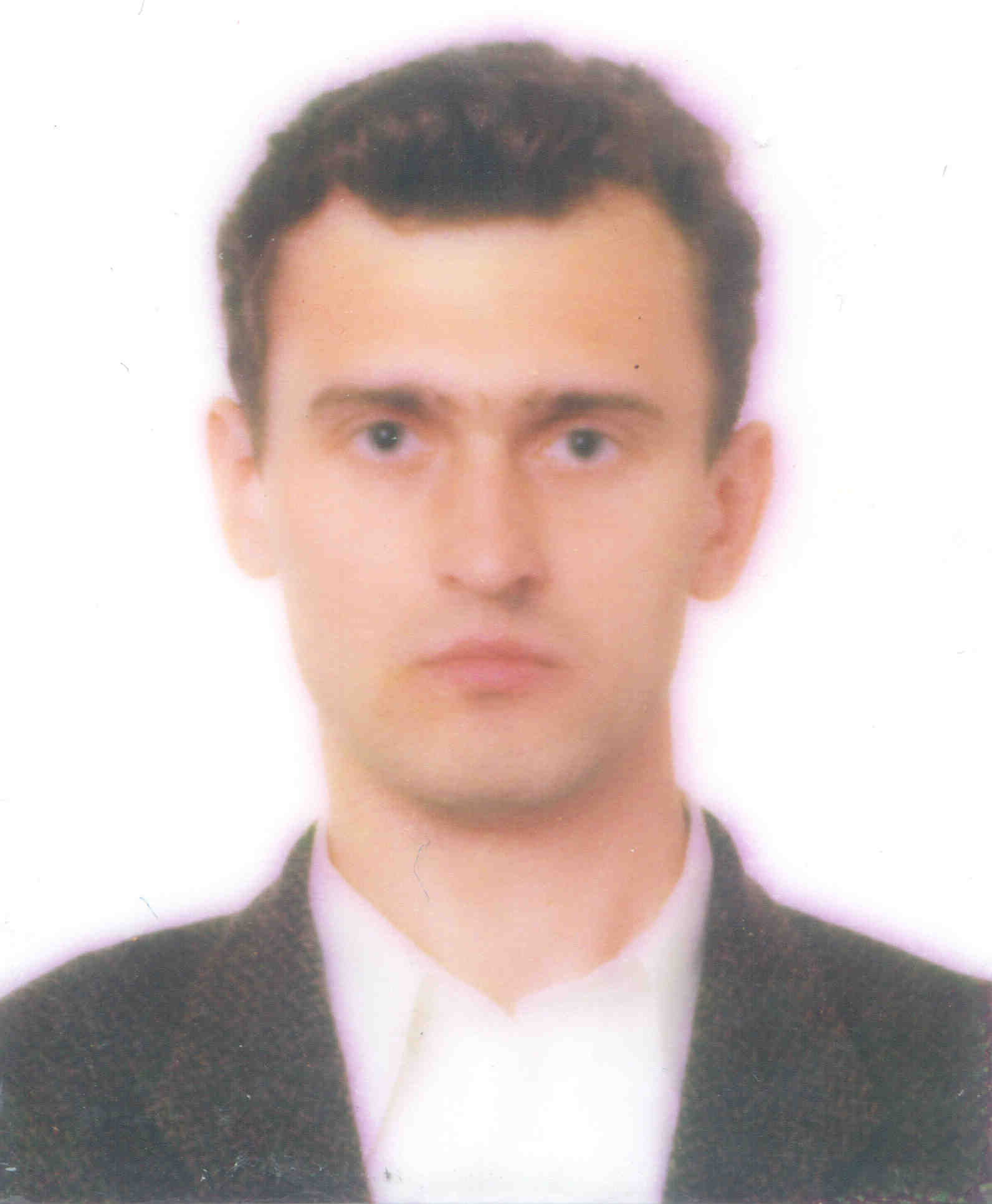
Alexander Uvarov
Dr. rer. nat. (Ph.D)
|
|
|
List of pubtications
[*.pdf] version of the (full) CV (with publication list also).
|
 Refereed
Journal Papers
Refereed
Journal Papers |

|
|
A. Uvarov and S. Fritzsche,
The European Physical Journal-Special
Topics, in print (2007)
"Anomalous transport properties of macromolecules
in solution. A semi-phenomenological approach".
Abstract: Based
on a semi-phenomenological Fokker-Planck approach, we present and discuss
a theoretical framework for studying the transport properties of macromolecules
in solution. A formally exact expression for the diffusion of macromolecules
is derived and utilized in order to show the anomalous character of the
macromolecular
diffusion, both at very short times, $t\rightarrow 0$, as well as in the
asymptotic limit, $t\rightarrow \infty$. Numerical computations for 50- and
100-bead macro\-molecules demonstrate moreover a `superdiffusive' behaviour
at short and intermediate times when compared with the data from the (Einstein's)
phenomenological theory.novel, semi--phenomenological expression is derived
for the friction tensor of macromolecules immersed into solution. By making
a few realistic assumptions about the interaction of the molecular beads
with the particles of the solvent, the friction tensor is expanded into a
series of terms which purely depend on the (j+2)-point correlation functions
of the solvent as defined in the kinetic theory of the liquids. In a first
application of this series expansion, the boundary condition coefficient
is investigated for a single bead in dependence on the strength of the interaction
among the solvent particles and with the macromolecule. When compared with
previous molecular--dynamical simulations, excellent agreement is found even
for a rather strong coupling between the bead and the solvent. Our new semi--phenomenological
approach may therefore help extend the study of transport properties towards
complex macromolecules in solution and will reduce the computational costs for that by several order of magnitude.
|
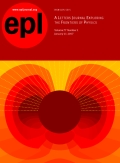
|
|
A. Uvarov and S. Fritzsche,
Europhysics Letters, 79, 68001-1--5 (2007)
"High--order correlation contributions
to the friction of macromolecules in solution:
A semi--phenomenological Fokker--Planck approach".
Abstract: A
novel, semi--phenomenological expression is derived for the friction tensor
of macromolecules immersed into solution. By making a few realistic assumptions
about the interaction of the molecular beads with the particles of the solvent,
the friction tensor is expanded into a series of terms which purely depend
on the (j+2)-point correlation functions of the solvent as defined in the
kinetic theory of the liquids. In a first application of this series expansion,
the boundary condition coefficient is investigated for a single bead in dependence
on the strength of the interaction among the solvent particles and with the
macromolecule. When compared with previous molecular--dynamical simulations,
excellent agreement is found even for a rather strong coupling between the
bead and the solvent. Our new semi--phenomenological approach may therefore
help extend the study of transport properties towards complex macromolecules
in solution and will reduce the computational \textit{costs} for that by
several order of magnitude.
|
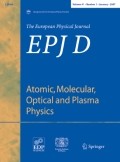
|
|
S. Fritzsche,
C. Z. Dong, F. Koike and A. Uvarov, The European Physical Journal
D, 45, 107--115 (2007)
"The low-lying level structure of atomic lowrencium (Z=103): energies and absorption rates".
Abstract:
The low-lying level structure
of atomic lawrencium has been calculated by using medium- to large-scale
multiconfiguration Dirac-Fock wave functions. From these computations, an
overview on the excitation energies and absorption rates is compiled for
the 30 lowest levels of the neutral atom with regard to its 7s²7p²P°1/2
ground state. For many of these levels, an accuracy of ~1200 cm¯¹ is estimated
by performing analogue computations for the homologous element lutetium.
From the predicted level scheme, the excitation energies of about 15 levels
fall into the spectroscopically relevant region between 20 000 and 30 000
cm¯¹ and,
hence, might help in the set-up and interpretation of forthcoming experiments
on the resonant excitation of atomic Lr.
|
|
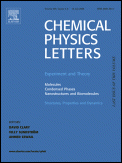
|
|
A. Uvarov and S. Fritzsche,
Chemical Physics Letters, in print, (2007)
"Restricted
rotational diffusion of dumbbell macromolecules on a surface: Interplay of
the bead-bead and bead-surface interactions".
Abstract: A
recently derived Diffusion equation [Uvarov A and FritzscheS (2004), J. Chem.
Phys. 121(13), 6561] is applied for analyzing the restricted rotational
motion of dumbbell macromolcules in solution, if immobilized on a surface.
Both, the bead--bead and bead--surface interactions are taken into account
in order to describe the relaxation (times), following an external perturbation,
as well as the orientational dynamics of such dumbbells. Detailed computations
have been performed in particular for the rotational diffusion coefficient
$D_R$ and the orientational correlation function $P_2$ of nonrigid dumbbells,
including several realistic bead--bead and bead--surface potentials. The
results from our (semi--phenomenological) theory are found to agree very
well with expensive Brownian dynamic simulations from the literature over
a wide range of parameters. This novel approach may therefore reduce the
costs considerably in studying the dynamical behaviour and the transport
properties of macromolecules in solution.
|
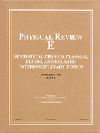
|
|
A. Uvarov and S. Fritzsche,
Physical Review E, 73(1), 011111-1--12, (2006)
"Friction of N-bead macromolecules in solution. Effects of
bead-solvent interaction".
Abstract: The
role of the bead--solvent interaction has been studied for its influence
on the dynamics of a N--bead macromolecule which are immersed into a solution.
Using a Fokker--Planck equation for the phase--space distribution function
of the macromolecule, we show that all the effects of the solution can be
treated entirely in terms of the friction tensors which are assigned to each
pair of interacting beads in the chain. For the high--density as well as
for the critical solvent, the properties of these tensors are discussed in
detail and are calculated by using several (realistic) choices of the bead--solvent
potential. From the friction tensors, moreover, an expression for the center--of--mass
friction coefficient of a (N--bead) chain macromolecule is derived. Numerical
data for this coefficient for "truncated" Lennard--Jones bead--solvent potential
are compared with results from molecular dynamic simulation and from the
phenomenological theoretical data as found in the literature.

This article has
been selected for the Virtual Journal of Biological
Physics Research, 11(3), (2006).
|

|
|
A. Uvarov and S. Fritzsche,
Progress in Colloid and Polymer
Science (Smart Colloidal Materials), 133, 95--99, (2006)
"Restricted rotational diffusion of non-rigid macromolecules
on surface: Effects of the bead-bead and bead-surface interaction".
Abstract:
A recently derived Diffusion equation [Uvarov A,
Fritzsche S, (2004) J. Chem. Phys. 121(13): 6561] is utilized to analyze
the restricted rotational motion of macromolcules in solution if they are
immobilized on a surface. Both, the bead-bead and bead-surface interactions
are taken into account in order to describe the orientational dynamics of
non-rigid macromolecules and its relaxation in time after a perturbation
has occured. Using several realistic bead – bead and bead – surface potentials,
detailed numerical investigations have been carried out for the rotational
diffusion coefficient as well as for the conformational phase - space distribution
function of the macromolecules. From this phase-space distribution, the orientational
correlation function are derived and compared with phenomenological computations
from the literature. Such correlation function can be observed in dielectric
relaxation and fluorescence depolarization experiments.
|

|
|
O. Rabinovych,
A. Uvarov,
D. Filenko and I. W. Rangelow, Applied Physics A, 81(8), 1661--1666, (2005)
"Radical Transport Moddeling in NANOJET".
Abstract: NANOJET
(Nanonozzle Plasma Jet Microfabrication Technology) based on scanning micro/nano--nozzle
is a competitive candidate for high-resolution direct nano--structuring
of different materials. In this device, electrically neutral radicals created
in plasma discharge are transported through a small tapered capillary (or
nozzle). A short distance between the nozzle and treated surface allows the
localized chemical interaction. Description of free radicals transport through
a high aspect ratio hollow tip, localized etching and high etching rates
without ion bombardment are demonstrated in this work. A Monte Carlo (MC)
based simulation model is used to study the transport and kinetic properties
of atomic oxygen gas flow through the finite length cylindrical nozzle with
different aspect ratios. The general aim of these investigations is to determine
and optimize the radicals transport and optimal etching capability. The MC-simulations
are compared with detailed experimental measurements, carried out for different
nozzle sizes, etching rates, and distances between the nozzle outlet and
the sample. To explore the influence of the oxygen gas flow kinetic properties
on the etching parameters, the oxygen atoms transmission is simulated for
a variety of the nozzle aspect ratios. This article presents the fundamental
considerations and the experimental proofs of the outlined nanofabrication
technique.
|
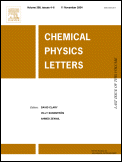
|
|
A. Uvarov and S. Fritzsche, Chemical Physics Letters, 401(1--3), 296--301, (2005)
"A semi--phenomenological approach to the transport and
diffusion of small spherical macromolecules in solution".
Abstract: A recently derived expression [A. Uvarov, S. Fritzsche,
Macromol. Theor. Simul. 13 (2004) 241] for the friction coefficient of macromolecules,
which are immersed into a solution, is utilized in order to calculate their
diffusion and boundary condition coefficients as function of the mass ratio
of the molecules, relative to the mass of the solvent particles. The results
from this semi-phenomenological theory are found to compare very well with
molecular-dynamical simulations over a wide range of mass ratios and at quite
different temperatures and viscosities of the solvent. Therefore, the use
of this novel approach may help reduce considerably the costs in studying
the dynamical behaviour and the transport properties of macromolecules in
solution.
|

|
|
A. Uvarov and S. Fritzsche, Journal of Chemical Physics,
121(13), 6561--6572, (2004)
"Effects of the bead--bead potential on the restricted rotational
diffusion of non--rigid macromolecules".
Abstract: The influence
of the bead--bead interaction on the rotational dynamics of macromolecules,
which are immersed into a solution, has been investigated by starting from
the microscopic theory of the macromolecular motion, i.e. from a Fokker--Planck
equation for the phase--space distribution function. From this equation,
we then derived an explicit expression for the configuration--space distribution
function of a non--rigid molecule which is immobilized on a surface. These
function contain all information about the interaction among the beads as
well as the effects from the surrounding solvent particles and from the surface.
For the restricted rotational motion, the dynamics of the macromolecules
can now be characterized in terms of a rotational diffusion coefficient as
well as a radial distribution functions. Detailed computations for the rotational
diffusion coefficient and the distribution functions have been carried out
for the HOOKEAN, FENE, and DNA--type bead--bead interaction.

This article has been
selected for the Virtual Journal of Biological
Physics Research, 8(7), (2004).
|
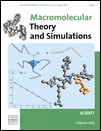
|
|
A. Uvarov and S. Fritzsche, Macromolecular Theory and Simulation,
13(3), 241--256, (2004)
"Effects of the bead-solvent interaction on the dynamics
of macromolecules,
1. The
dumbbell molecule".
Abstract: Hamiltonian
dynamics and a chain model are used to study the dynamics of macromolecules
which are immersed into a solution. From the Hamiltonian of the overall system
'macromolecule + solvent', then, a master and a Fokker--Planck equation are
derived for the phase--space distribution of the macromolecule. In the Fokker--Planck
equation, all information about the interaction among the beads of the macromolecule
as well as the effects from the surrounding solvent is described by friction
tensors, which are expressed in terms of the bead--solvent interaction and
the dynamical structure factor of the solvent. To explore the influence of
the bead--solvent potential on the dynamics of macromolecules, the friction
tensors are calculated for a dumbbell molecule and for three choices of the
interaction (Yukawa, Born--Mayer, and Lennard--Jones). Expressions are derived,
in particular, for the friction tensor coefficients of the center--of--mass
and the relative coordinates of the dumbbell. For the long--time behaviour
of the internal momentum autocorrelation function, moreover, an 'algebebraic
decay' is found, in contrast to the (unphysical) exponential decay as known
from phenomenological theory.
|
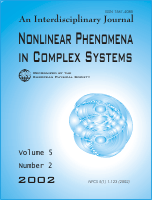
|
|
A. V. Uvarov,
M.F. Gelin and A.P. Blokhin, Nonlinear Phenomena in Complex Systems,
6(1), 572--576, (2003)
"Dynamics of macromolecules in the bath
of harmonic oscillators".
Abstract:
We consider the Hamilton dynamics of a Gaussian
macromolecule immersed in the bath of harmonic oscillators. Such a bath is
shown to insure the conventional dissipative dynamics for the center of mass
coordinate of the macromolecule. It however produces the deterministic equations
of motion for the internal (inter-bead distance) co-ordinates, whose evolution
is influenced by additional bath-induced linear forces. It is argued that
the harmonic bath with bilinear system-bath coupling is insufficient for
inducing dissipative dynamics for a system consisting of several point particles.
|
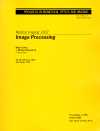
|
|
A. V. Uvarov, M.F. Gelin and
A.P. Blokhin, Laser physics and spectroscopy. SPIE
4002, 255-260, (2000)
"Polarized fluorescence
of nonrigid macromolecules in the solution".
Abstract:
Depolarization
of fluorescence of labeled
macromolecules is determined by the second rank time orientational correlation functions
(OCFs) of the absorption and emission
dipole moments. To calculate the OCFs, macromolecules are conventionally
modeled by the set of
spherical particles (beads). To investigate the influence of the inertial and memory effects
on the orientational relaxation,
the diffusion equation with memory is used to perform illustrative calculations of the OCFs
for a 2D system consisting of three
beads joined by two rigid rods. These calculations reveal that under certain conditions
the OCFs exhibit an oscillatory behavior, which is irreproducible
within the standard diffusion equation
|

|
|
A.P. Blokhin,
M.F. Gelin and A. V. Uvarov,
Max Planck Institute for the Physics of Complex systemes,
preprint, mpi--pks/0105004, (2000)
"Doese the harmonic
oscillator bath induce dissipative dynamics of dumbbells?"
|

|
|
A.P. Blokhin,
M.F. Gelin and A. V. Uvarov,
Nonlinear Phenomena in Complex
Systems, 6(1), 572-576, (2000)
"Orientation relaxation of macromolecules
immobilized on a surface."
Abstract:
To investigate
the infuence of inertial effects on the orientational relaxation of macromolecules
subjected to rigid intersubunit constraints and placed
in a bufer medium, the diffusion equation with memory (DEM) is deduced from
the Fokker-Planck equation (FPE) in case of arbitrary generalized coordinates
(the FPE has been derived by us elsewhere [1,2]). The DEM allows us to establish
a correct short time behavior for corre-lation functions (CFs) of generalized
coordinates. The DEM is invoked to perform illustrative calculations of the
orientational CFs for immobilized on a surface once broken nonrigid rod in
two dimensions (2D). These calculations reveal that the CFs under certain
conditions exhibit an oscillatory behavior, which is irrepro-ducible within
the standard diffusion equation (DE). Several methods are considered for
the approximate solution of the DEM, and their application to three dimensional
(3D) DEMs is discussed.
|
|
 Submitted
Papers and Selected Papers which have to be published
Submitted
Papers and Selected Papers which have to be published
|
A. Uvarov and S. Fritzsche, Physical Review E, submitted, (2008)
"Friction theory of macromolecules
in solution
I. Time evolution of the phase-space distribution function of N--bead macromolecules".
A. Uvarov
and S. Fritzsche, Physical Review E, submitted,
(2008)
"Friction theory of macromolecules
in solution
II. Properties of the friction tensors".
A. Uvarov and S. Fritzsche, New Journal
of Physics, submitted, (2007)
"Time dependent friction memory function
via solvation properties of the macromolecules in solutions: microscopic
view point".
A. Uvarov
and S. Fritzsche, Europhysics Letters, submitted, (207)
"Microscopic insight into the validity
of the Stokes-Einstein relation:
The diffusion coefficient of glycerol at low temperature".
A. Uvarov and S. Fritzsche, Physical Review E, to be published, (2008)
"Transport properties
of macromolecules in solution via Kolmogorov--Sinai entropy".
A. Uvarov and S. Fritzsche, Physical Review A, to be published,
(2008)
"Classical versus quantum
microscopical approaches for diffusion of macromolecule in solution".
A. Uvarov
and S. Fritzsche, Macromolecular Theory and Simulation, to be published,
(2008)
"Correlation between fractal
structure and diffusion of the macromolecules in the solvent".
|
 Selected
non-refereed papers
Selected
non-refereed papers |
Relaxation and transport properties
of the macromolecules in solution: effects of the friction tensors.
A. Uvarov and S. Fritzsche,
Proc. of the "71 Annual Meetning of the DPG", Regensburg, Germany, 2007.
A microscopic view on the Stokes-Einstein relation: anomalous translational
and rotational motion of macromolecules.
A. Uvarov and S. Fritzsche,
Proc. of the "71 Annual
Meetning of the DPG", Regensburg, Germany,
2007..
Effect of the friction on the transport and relaxation properties of non--rigid
complex macromolecule in solutions.
A. Uvarov and S. Fritzsche,
Proc. of the WE-Heraeus Seminar "Thermal Transport and Relaxation: Foundation and
Perspectives", Bad Honnef, Germany,
2007.
abstract&poster:

Study of the anomalous translational
and rotational diffusion properties of macromolecules in solution: microscopic
view point.
A. Uvarov and S. Fritzsche,
Proc. of the WE-Heraeus Seminar "Anomalous Transport: Experimental Results and
Theoretical Challenge", Bad Honnef,
Germany, 2006.
abstract&poster:

Friction of macromolecules in
solution: Effect of high-order correlations.
A. Uvarov and S. Fritzsche,
Proc. of the "DPG-spring
meeting of the Division Condensed Matter; EPS-21st General Conference of
the Condensed Matter Division", Dresden,
Germany, 2006.
abstract&poster:

Effect of the bead-surface interaction
on the restricted rotational dynamics of the nonrigid immobilized macromolecules.
A. Uvarov and S. Fritzsche,
Proc. of the "DPG-spring meeting of the Division Condensed Matter;
EPS-21st General Conference of the Condensed Matter Division", Dresden, Germany, 2006.
abstract&poster:

Restricted rotational diffusion
of non--rigid macromolecules on surface: Effects of the bead--bead and bead
surface interactions.
A. Uvarov and S. Fritzsche, Proc.
of the 42nd Meeting of the German Colloid Society
"Smart materials: foarms, gels and microcapsules", Aachen, Germany, 2005.
abstract&poster:

Study of the Transport
and Diffusion Properties of Macromolecules in Solution.
A. Uvarov and S. Fritzsche,
Proc. of the 344.
WE-Heraeus Seminar "Understanding the Self-Organization of Charged Polymers",
Bad Honnef, Germany, 2005.
abstract&poster:

Transport and diffusion
properties of macromolecules in solution.
A. Uvarov and S. Fritzsche,
Proc. of the "69. Jahrestagung der Deutschen Physikalischen
Gesellschaft (DPG) mit allen Fachverba"nden und der Astronomischen Gesellschaft
(AG) im World Year / International Year of Physics 2005.
SYMPOSIUM: Dynamics of
multi-component fluids", Berlin, Germany, 2005.
abstract&poster:

Rotational dynamics of
nonrigid biomolecules in solution: Influence of the bead-bead interaction.
A. Uvarov and S. Fritzsche,
Proc. of the "69. Jahrestagung der Deutschen Physikalischen
Gesellschaft (DPG) mit allen Fachverba"nden und
der Astronomischen Gesellschaft (AG) im World Year / International Year of
Physics 2005.
SYMPOSIUM: Dynamics of
multi-component fluids", Berlin, Germany, 2005.
abstract&poster:

Influence of the Bead--Bead and Bead--Solvent Interactions on the Dynamics
of Nonrigid Biomolecules in Solution.
A. Uvarov and S. Fritzsche, Proc.
of the Minerva-Gentner Symposium on "Optical Spectroscopy of Biomolecular
Dynamics", Kloster Banz (Staffelstein), Germany, 2004
abstract&poster:

Influence of the Bead--Bead Interaction on the Rotational
Dynamics of Nonrigid Macromolecules in Solution.
A.
Uvarov and S. Fritzsche, Proc. of the "68. Physikertagung und Frühjahrstagung
des Arbeitskreises Atome, Moleküle, Quantenoptik und Plasmen (AMOP) der DPG
" of the Germany Physical Society (Deutsch Physikalische Gesellschaft-DPG),
München, Germany, 2004.
abstract&poster:

Effects of bead--solvent interaction on the diffusion of
macromolecules.
A. Uvarov and S. Fritzsche, Proc. of the International
Workshop on "Proteomics: Protein Structure, Function and Interactions", Trieste,
Italy, 2003.
abstract&poster:

Study on the effects of bead--solvent potentials on the
dynamics of macromolecules.
A. Uvarov and S. Fritzsche, Proc. of the 298. WE-Heraeus
Seminar "New Approaches and Perspectives in Polymer Physics", Bad Honnef,
Germany, 2003.
abstract&poster:

Effects of macromolecule--solvent potential on the dynamics
of macromolecules.
A. Uvarov and S. Fritzsche, Proc. of the "Symposium
Simulation and experiment - spanning the bridge between microscopic and macroscopic
scales (SYSE)" of the Germany Physical Society (Deutsch Physikalische Gesellschaft--DPG),
p.560, Dresden, Germany, 2003
abstract&poster:

Effects of bead--solvent potential
on the dynamics of macromolecules.
A. Uvarov and S. Fritzsche, Proc. of poster
competition of the Kassel university, Kassel, Germany, 2003
Dynamical Behaviour of Macromolecules Immersed in Heat Bath:
Exact Results.
A. V. Uvarov, Proc. of the European Conference "Physique
en Herbe 2001", Strasbourg, France, 2001
abstract&poster:

Dynamics of dumbbells in Gaussian
solution: exact results.
A. V. Uvarov, Proc. of the "Middle-European
Cooperation in Statistical Physics", Prague, Czechia, 2001
Theoretical approach and computer simulation of depolarization
of fluorescence of nonrigid biomolecules.
A. V. Uvarov, Proc. of the "3rd Prague's
Workshop on Molecular Photophysics and Dynamics", Prague, Czechia, 2001
Computer simulation and theoretical
approach in the Brownian dynamics with rigid constraints.
A. V. Uvarov, Conference Proceedings 574 "Modeling
Complex system, Sixth Granada Seminar on Computational Physics", Granada,
Spain, 2001
Polarized fluorescence as a tool for studying macromolecular
dynamics.
A. V. Uvarov, A.P. Blokhin, M.F. Gelin, Proc.
of the International Conference for Young Scientists and Engineers, "LOYS-2000
",p.168, St. Petersburg, Russia, 2000
abstract&poster:

Inertial effects in the Brownian dynamics with rigid constraints.
A.
V. Uvarov, Proc. of the "1318th Conference of the Condensed Matter
Division of the EPS", p.252 Montreux, Switzerland, 2000
Depolarization of fluorescence of subunit macromolecules.
A.
V. Uvarov, Proc. of the International Conference for Young Scientists
and Engineers, "Optics' 99", p.41, St. Petersburg, Russia, 1999
About description of
conformational dynamics of nonrigid macromolecules in a condensed matter.
A.
V. Uvarov, Proc. of the "7th Conference on Physics of Condensed Matters",
p.132, Grodno, Belarus, 1999 |
click here to get the print (.pdf)
version of the publication list 
|

 Personal Data
Personal Data Research
Research Other
Other Submitted
Papers and Selected Papers which have to be published
Submitted
Papers and Selected Papers which have to be published Selected
non-refereed papers
Selected
non-refereed papers













